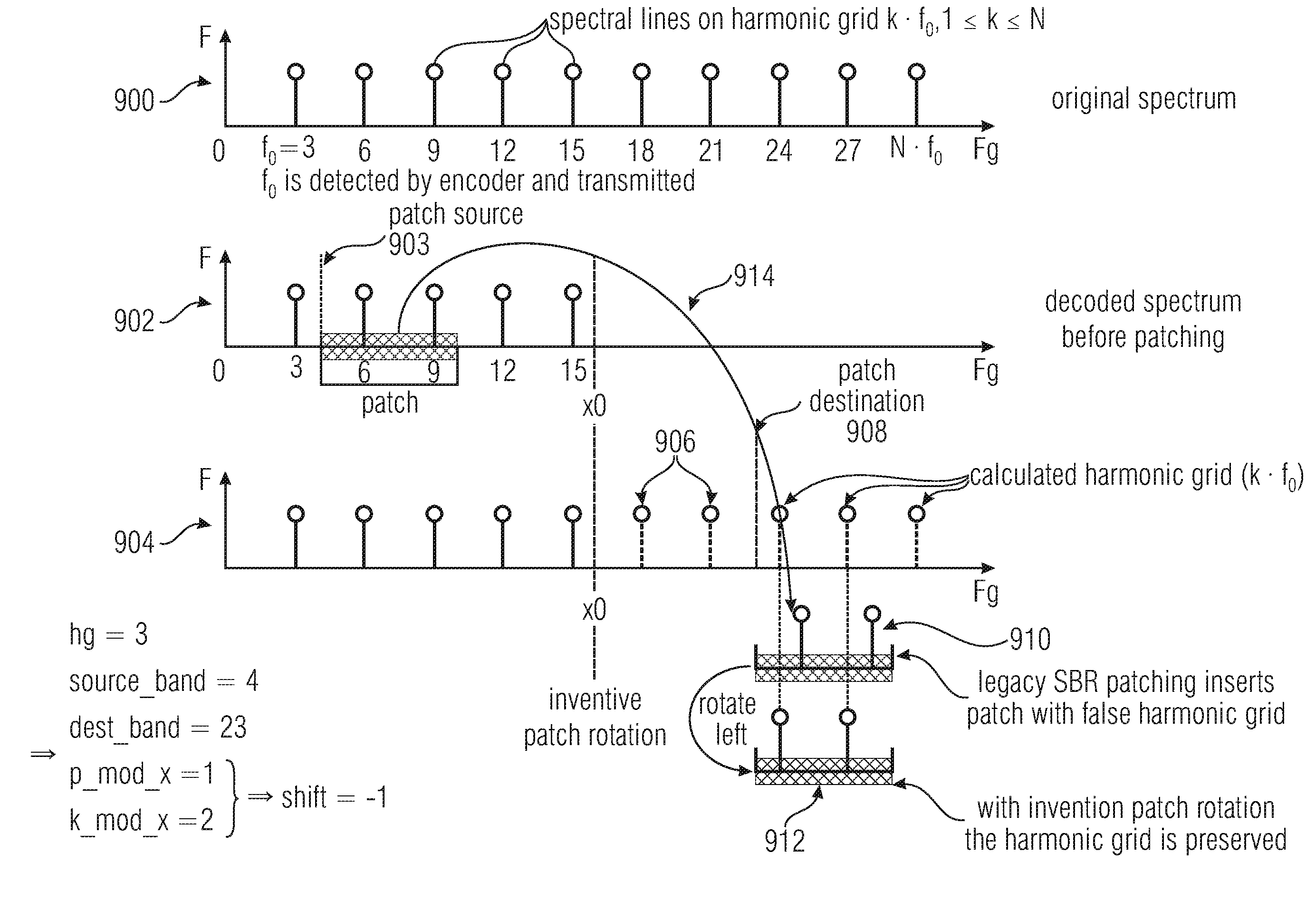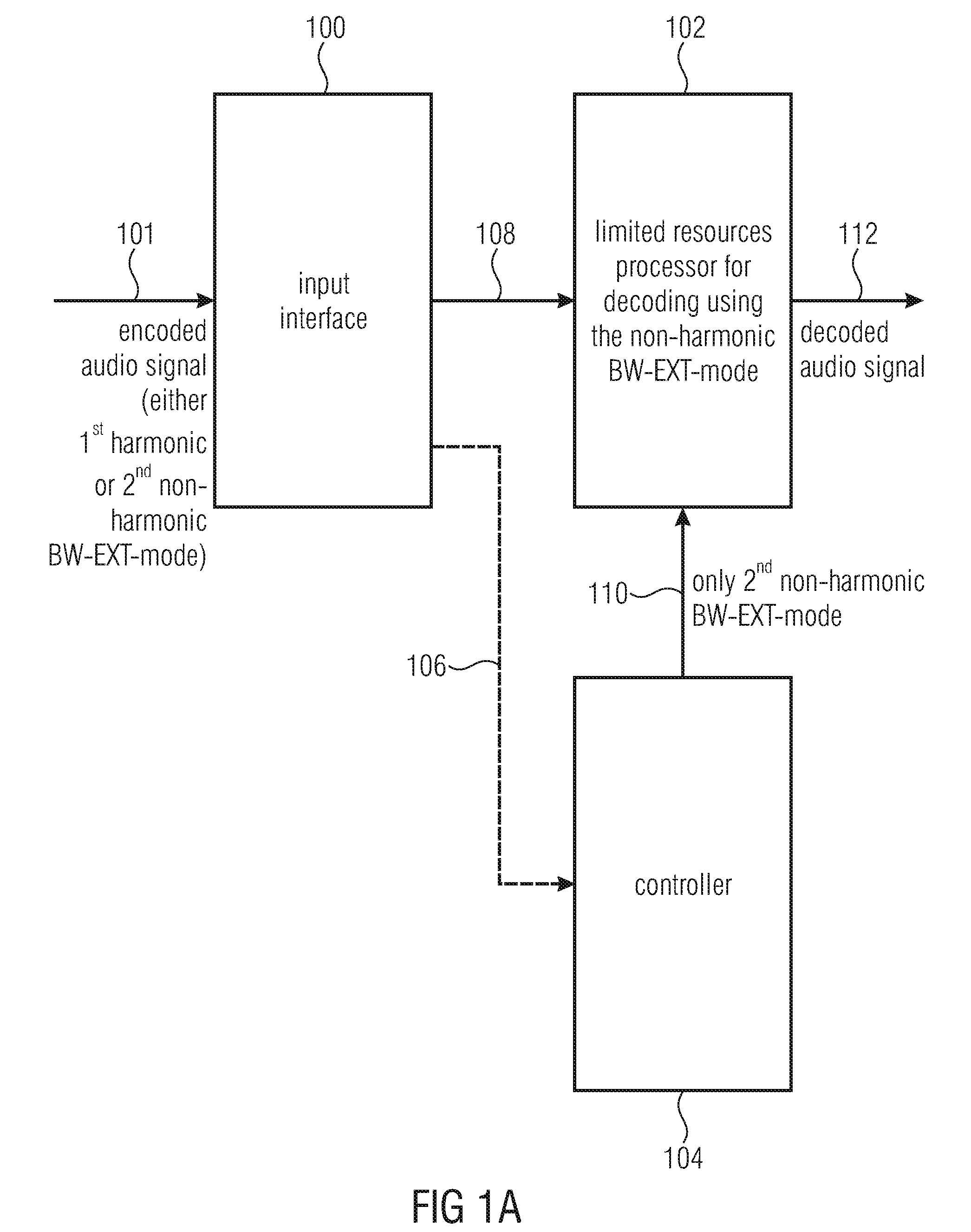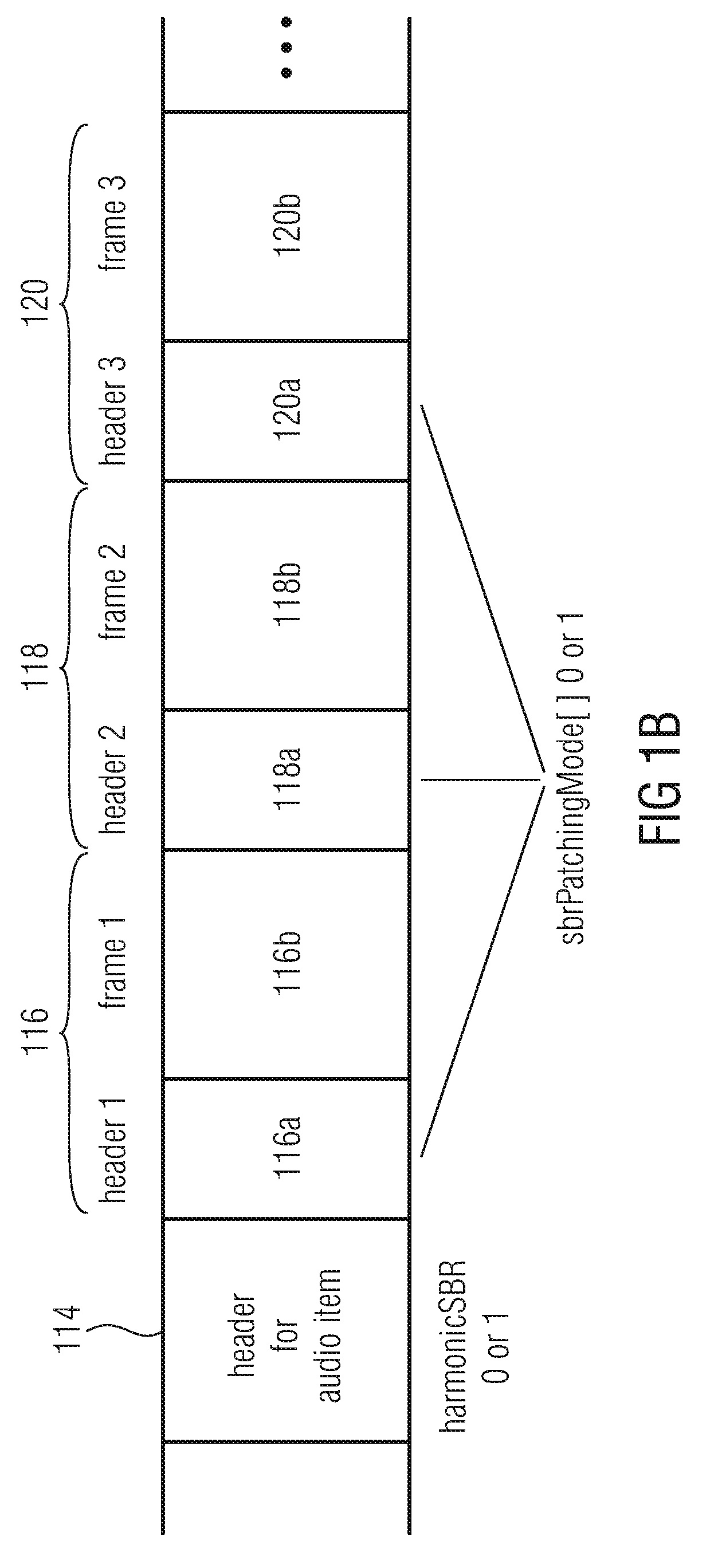Apparatus and method for decoding an encoded audio signal with low computational resources
a technology of encoded audio and computational resources, applied in the field of audio processing, can solve the problems of insignificant complexity of copy-up patching, inability to decode audio signals, and inability to meet the requirements of low-complexity computing workload and memory consumption, so as to reduce the computational complexity and memory demand, improve the sound quality, and reduce the amount of memory resources
- Summary
- Abstract
- Description
- Claims
- Application Information
AI Technical Summary
Benefits of technology
Problems solved by technology
Method used
Image
Examples
Embodiment Construction
[0033]FIG. 1a illustrates an embodiment of an apparatus for decoding an encoded audio signal. The encoded audio signal comprises bandwidth extension control data indicating either a first harmonic bandwidth extension mode or a second non-harmonic bandwidth extension mode. The encoded audio signal is input on a line 101 into an input interface 100. The input interface is connected via line 108 to a limited resources processor 102. Furthermore, a controller 104 is provided which is at least optionally connected to the input interface 100 via line 106 and which is additionally connected to the processor 102 via line 110. The output of the processor 102 is a decoded audio signal as indicated at 112. The input interface 100 is configured for receiving the encoded audio signal comprising the bandwidth extension control data indicating either a first harmonic bandwidth extension mode or a second non-harmonic bandwidth extension mode for an encoded portion such as a frame of the encoded aud...
PUM
 Login to View More
Login to View More Abstract
Description
Claims
Application Information
 Login to View More
Login to View More - R&D
- Intellectual Property
- Life Sciences
- Materials
- Tech Scout
- Unparalleled Data Quality
- Higher Quality Content
- 60% Fewer Hallucinations
Browse by: Latest US Patents, China's latest patents, Technical Efficacy Thesaurus, Application Domain, Technology Topic, Popular Technical Reports.
© 2025 PatSnap. All rights reserved.Legal|Privacy policy|Modern Slavery Act Transparency Statement|Sitemap|About US| Contact US: help@patsnap.com



